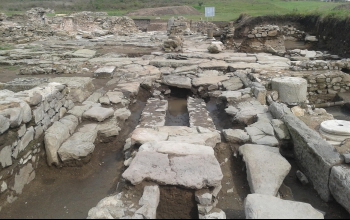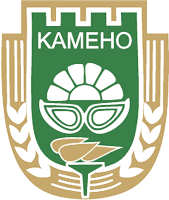Deultum
The famous Roman city of Deultum is 18 km west of the city of Burgas, at the bottom of the Mandra Lake. Here two rivers flow into the lake - Sredetska and RusokastrenskaThe area of the Roman city has been inhabited since ancient times, as early as the XIII-XI century BC. Later, in the 5th-4th century BC, a large field of Thracian cult pits was discovered in the Kostadin Cheshma locality. A wall of a ceramic vessel was found in one of the pits, on which the name "Dovelt" was written in Greek letters. Translated, it means area between two swamps
There are also Thracian tombs in the territory of the Roman city.
The Roman colony of Deultum was founded in the 1st century AD, during the reign of the Roman emperor Vespasian. The veterans of the VIII August Legion settled here. From the end of the II century the city was fortified and experienced an incredible prosperity. A sign of this are 160 types of coins minted in his mint. They often depict river gods, dolphins and seagoing ships - a clear sign that Deultum's economy was closely linked to local river and sea trade.
Archaeological excavations have revealed sanctuaries, a Roman bath, and residential buildings. The monumental architectural remains are preserved at a height of over 6 m. Especially interesting is the open temple of Emperor North, where not only parts of bronze statues but also a whole head of Emperor Septimius Severus was found. Extremely rich burials of Roman citizens were found in the necropolises of the city, in the graves of which vessels, gold and silver jewelry and many more were found as funeral gifts. etc. Towards the end of the 3rd century the town was fortified with a new fortress wall, and in the following century it was already the seat of a metropolitan. By this time it was already found in the springs under the name Develt.
Archaeological excavations have revealed sanctuaries, a Roman bath, and residential buildings. The monumental architectural remains are preserved at a height of over 6 m. Especially interesting is the open temple of Emperor North, where not only parts of bronze statues but also a whole head of Emperor Septimius Severus were found. Extremely rich burials of Roman citizens were found in the necropolises of the city, in the graves of which vessels, gold and silver jewelry and many more were found as funeral gifts. etc. Towards the end of the 3rd century the town was fortified with a new fortress wall, and in the following century it was already the seat of a metropolitan. By this time it was already found in the springs under the name Develt.
In 812 the city was included in the borders of the Bulgarian state, and a border customs point was built 2 km from it, serving the trade between Bulgaria and Byzantium.
The Erkesia shaft was also dug at that time. It is 135 km long. and starting from Develt, ends at the present town of Simeonovgrad. The shaft was built by the Bulgarians and marks the border between Bulgaria and Byzantium.
By the end of the 12th century the town was displaced 1.5 km further south, at the fortress "Upper Town". From this century it loses its significance and is not mentioned in historical sources.



